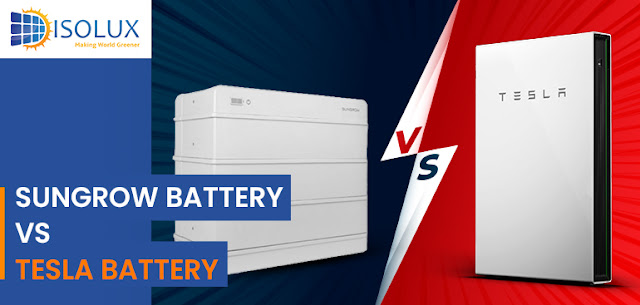Sungrow Battery vs Tesla Battery
Sungrow Batteries
Sungrow, a Chinese company founded in 1997, has gained a reputation for its cost-effective and safe battery solutions. Each Sungrow battery module has a capacity of 3.2 kWh, and you can stack up to eight modules for a total capacity of 25.6 kWh. This modularity means you can tailor the battery size to your specific energy needs, avoiding the unnecessary expense of oversizing. Their lithium iron phosphate (LFP) batteries, such as the SBR HV series, offer several advantages:
Cost-effectiveness: Sungrow batteries are generally more affordable than Tesla’s offerings, making them an attractive option for budget-conscious homeowners.
Safety and Stability: LFP batteries are known for their excellent safety and stability characteristics, with a lower risk of thermal runaway and fire hazards.
Three-Phase Support: Sungrow batteries support three-phase systems, allowing for faster charging of electric vehicles with a maximum capacity of 10 kW.
Flexible Capacity: Sungrow batteries are modular, allowing you to customize your energy storage system from 9.6 kWh to 25.6 kWh for a single string and up to 102.4 kWh by combining multiple strings.
However, Sungrow batteries also have some drawbacks:
Limited Brand Recognition: Compared to Tesla, Sungrow may have limited brand recognition in some regions, which could impact customer confidence.
Limited Distribution Network: Sungrow’s distribution network may not be as extensive as Tesla’s, potentially leading to challenges in availability and customer support.
Tesla Batteries
Tesla, a well-established brand in the electric vehicle and energy storage industry, offers the Powerwall battery system. Here are some key advantages of Tesla batteries:
Established Brand and Reputation: Tesla’s brand recognition and reputation instill confidence in customers regarding the reliability and performance of their products.
Read More: Sungrow Battery vs Tesla Battery



.jpg)
Comments
Post a Comment